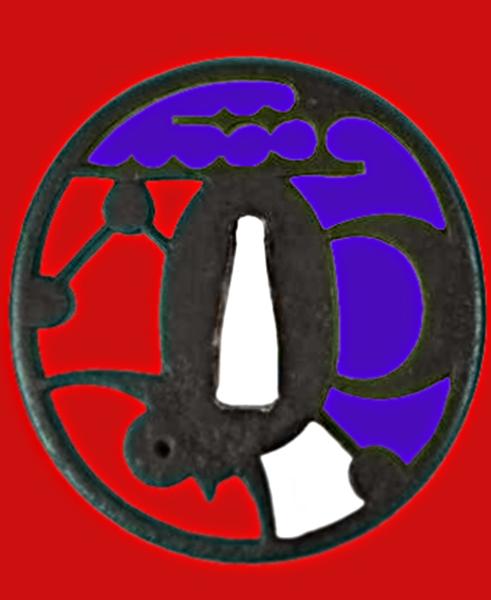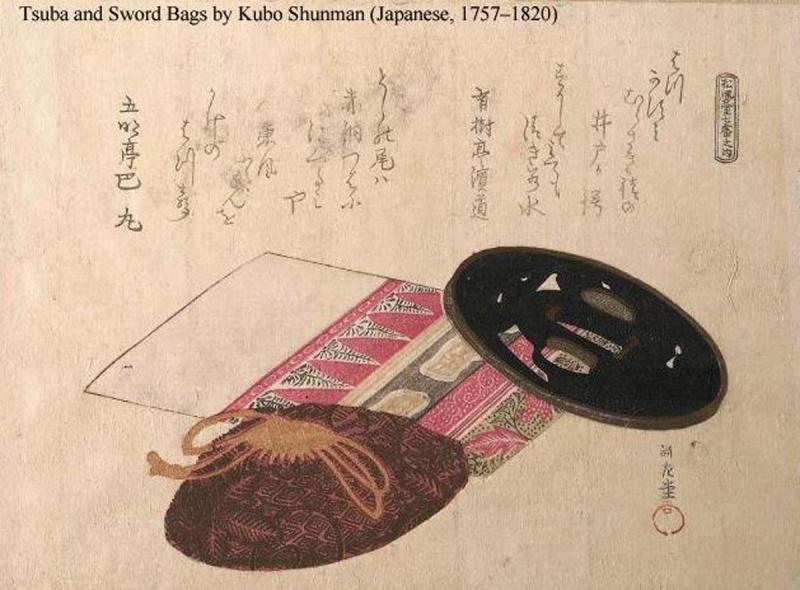A Beautiful Edo Period Akasaka School O Sukashi Tsuba Decorated in Cut Silhouette With Clouds, Stars and Moon.
Early in the 17th century, tradition says, a dealer of Kiōto, named Kariganeya Hikobei, practised the designing of openwork iron guards in a new and refined style and had them made by a group of skilled craftsmen. From among these men he selected one Shōgunal capital, and settled with him at Kurokawa-dani in the Akasaka Japanese text district. Shōzayemon took the name of Tadamasa and continued his work on Kariganeya’s designs, dying in 1657. His son (or younger brother) Shōyemon, who succeeded him, calling himself Tadamasa II and adopting Akasaka as a surname, died in 1677 and was in turn succeeded by his son Masatora (d. 1707), by Masatora’s son Tadamune, and thence by four generations all called Tadatoki, the last living on into the middle of the 19th century. The first Tadatoki seems to have removed to Kiōto with his father’s pupil Tadashige and there to have founded a western branch of the school. Besides these a number of pupils, all called Tada-…, are recorded.
The earlier Akasaka guards closely resemble the pierced work of the Heianjō and Owari workers (Group III). Later productions display a number of striking features, such as clean-cut fret-piercing in positive silhouette of designs leaving little of the iron in reserve, the addition of a slight engraving finish, a rounded or rather tapered edge to the guard, and, in some of the more recent specimens, the semi-circular enlargement of each end of the tang-hole, as if to take a plug (not supplied) of abnormal size. Enrichments of other metals are entirely absent.
Code: 25445
495.00 GBP



